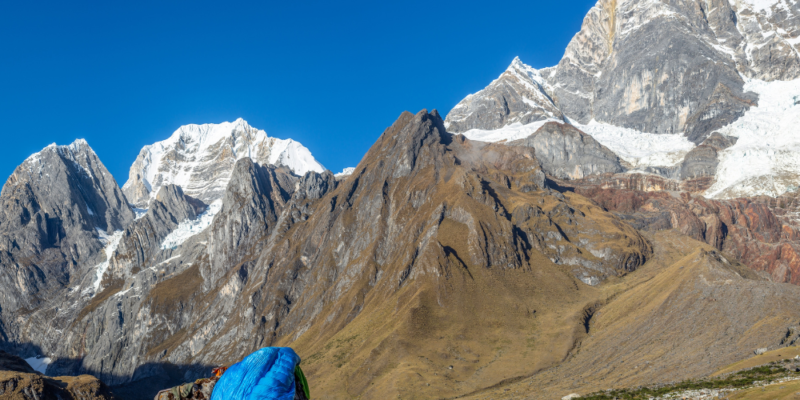
Embarking on the Indrahar Pass Trek is an adventure of a lifetime. This trek offers breathtaking views, challenging terrains, and a chance to experience the serene beauty of the Himalayas. Planning your trek meticulously can make the difference between a successful journey and a stressful one. In this comprehensive guide, we’ll cover everything you need to know to plan your Indrahar Pass Trek, including detailed benefits, practical tips for beginners, and essential information about the weather and temperature.
The Indrahar Pass Trek is one of the most sought-after trekking routes in Himachal Pradesh, India. Situated at an altitude of 4,342 meters, this trek provides stunning vistas of the Dhauladhar range and the lush Kangra valley. Whether you’re a seasoned trekker or a beginner, the Indrahar Pass Trek offers a perfect blend of adventure and natural beauty.
Why Choose the Indrahar Pass Trek?
The Indrahar Pass Trek is renowned for its diverse landscapes, including dense deodar forests, sparkling streams, and snow-covered peaks. The trek is not just about reaching the pass; it’s about the journey through quaint villages, encountering diverse flora and fauna, and witnessing the majestic beauty of the Himalayas.
Best Time to Trek
Understanding the best time to embark on the Indrahar Pass Trek is crucial for a safe and enjoyable experience. The ideal seasons are:
- Spring (April to June): The weather is pleasant, and the trail is adorned with blooming flowers.
- Autumn (September to November): Clear skies and moderate temperatures make for perfect trekking conditions.
Avoid trekking during the monsoon season (July to August) due to heavy rainfall and landslides, and winter (December to March) when the pass is covered in heavy snow.
Detailed Benefits of the Indrahar Pass Trek
Trekking to Indrahar Pass offers numerous benefits beyond just the physical challenge. Here are some key highlights:
Stunning Scenery
The trek provides panoramic views of the snow-clad Dhauladhar range and the lush green Kangra valley. The changing landscapes, from dense forests to rocky terrains and snow patches, keep the trek exciting and visually appealing.
Physical and Mental Health Benefits
Trekking is a great way to improve your physical fitness. The challenging trails of the Indrahar Pass Trek help in building stamina, endurance, and muscle strength. Additionally, being amidst nature has proven mental health benefits, reducing stress and enhancing your overall well-being.
Cultural Immersion
The trek offers a glimpse into the rich culture and lifestyle of the local Gaddi tribes. Interacting with the villagers, understanding their traditions, and experiencing their hospitality adds a unique cultural dimension to your trekking experience.
Practical Tips for Beginners
For those new to trekking, planning and preparation are key. Here are some practical tips to help you get started:
Physical Preparation
Start your physical training at least a month before the trek. Focus on cardiovascular exercises like running, cycling, and swimming to build your stamina. Include strength training exercises to improve your muscle strength, especially in your legs and core.
Packing Essentials
Packing the right gear is crucial for a comfortable trekking experience. Here’s a checklist of essentials:
- Trekking Shoes: Invest in a good pair of waterproof trekking shoes with a sturdy grip.
- Clothing: Layering is key. Pack moisture-wicking base layers, insulating mid-layers, and a waterproof outer layer. Don’t forget a warm hat and gloves.
- Backpack: A comfortable and sturdy backpack with a capacity of 40-50 liters is ideal.
- Sleeping Bag: Choose a sleeping bag rated for sub-zero temperatures.
- First Aid Kit: Include essentials like band-aids, antiseptics, painkillers, and any personal medication.
- Trekking Poles: These can be very helpful in maintaining balance and reducing strain on your knees.
- Sunscreen and Sunglasses: Protect your skin and eyes from the harsh sun at high altitudes.
- Water Bottles and Purification Tablets: Stay hydrated and ensure you have access to clean drinking water.
- Energy Snacks: Carry energy bars, nuts, and dry fruits to keep your energy levels up during the trek.
Acclimatization
Acclimatization is crucial to prevent altitude sickness. Spend a day or two at a higher altitude to allow your body to adjust. Hydrate well, eat light, and avoid alcohol and smoking during the trek.
Understanding the Weather and Temperature
The weather on the Indrahar Pass Trek can be unpredictable. Here’s a breakdown of what to expect:
- Spring (April to June): Daytime temperatures range from 12°C to 20°C, while nights can drop to 0°C to 5°C. The weather is generally clear, but be prepared for occasional rain showers.
- Autumn (September to November): Daytime temperatures range from 10°C to 18°C, and nighttime temperatures can fall to -2°C to 5°C. The skies are usually clear, offering spectacular views.
Always check the weather forecast before starting your trek and be prepared for sudden changes in weather conditions.
Hiring a Guide
For beginners, hiring a local guide or joining a trekking group can enhance your experience. A guide can provide valuable insights into the trail, help with navigation, and ensure your safety throughout the trek.
Leave No Trace
Practice responsible trekking by following the principles of Leave No Trace. Carry all your waste with you, avoid disturbing wildlife, and respect the local culture and traditions.
Detailed Itinerary
A well-planned itinerary is essential for a smooth trekking experience. Here’s a suggested itinerary for the Indrahar Pass Trek:
Day 1: Arrival in McLeod Ganj
Arrive in McLeod Ganj, the starting point of the trek. Spend the day exploring the town, visiting the Dalai Lama Temple, and acclimatizing to the altitude.
Day 2: McLeod Ganj to Triund (9 km, 5-6 hours)
Begin your trek to Triund, a scenic meadow offering panoramic views of the Dhauladhar range. The trail passes through dense forests of oak and rhododendron. Camp overnight at Triund.
Day 3: Triund to Lahesh Cave (6 km, 4-5 hours)
Continue your trek from Triund to Lahesh Cave. The trail becomes steeper and more challenging as you ascend. Lahesh Cave serves as a base camp before crossing the Indrahar Pass.
Day 4: Lahesh Cave to Indrahar Pass and Back to Lahesh Cave (12 km, 7-8 hours)
This is the most challenging day of the trek. Start early to cross the Indrahar Pass. The climb involves navigating rocky terrain and snow patches. Upon reaching the pass, enjoy the breathtaking views before descending back to Lahesh Cave.
Day 5: Lahesh Cave to McLeod Ganj (15 km, 6-7 hours)
Descend back to McLeod Ganj, retracing your steps through Triund. Celebrate your successful trek with a meal at one of the local cafes.
Safety Tips
Safety should always be a priority when trekking. Here are some tips to ensure a safe trekking experience:
Know Your Limits
Understand your physical capabilities and don’t push yourself beyond your limits. Take breaks when needed and listen to your body.
Stay Hydrated
Drink plenty of water to stay hydrated, especially at high altitudes. Dehydration can exacerbate altitude sickness.
Monitor the Weather
Keep an eye on the weather forecast and be prepared for sudden changes. Carry appropriate gear to handle rain, snow, or extreme cold.
Trek in a Group
If you’re a beginner, it’s advisable to trek in a group or with a guide. This ensures that you have support in case of emergencies.
Emergency Contacts
Keep a list of emergency contacts, including local authorities and nearby medical facilities. Carry a fully charged mobile phone with backup power sources.
Environmental Responsibility
Trekking in the Himalayas comes with the responsibility to preserve the natural environment. Here are some ways to minimize your impact:
Avoid Plastic
Carry reusable water bottles and avoid using single-use plastics. Dispose of any waste responsibly.
Stick to the Trails
Stay on designated trails to prevent soil erosion and damage to vegetation. Avoid taking shortcuts.
Respect Wildlife
Observe wildlife from a distance and do not feed or disturb animals. Respect their natural habitat.
Conclusion
Planning your Indrahar Pass Trek doesn’t have to be daunting. With the right preparation and mindset, you can enjoy a safe and memorable trekking experience. From understanding the best time to trek, reaping the physical and mental benefits, to packing the right gear and acclimatizing properly, every step you take in preparation brings you closer to an adventure of a lifetime. So lace up your trekking boots, pack your bags, and get ready to conquer the Indrahar Pass Trek!











